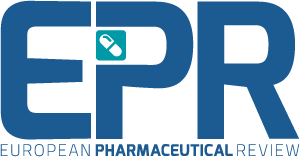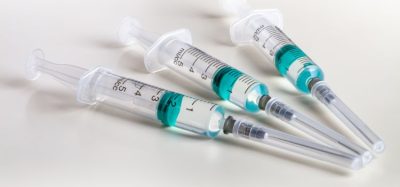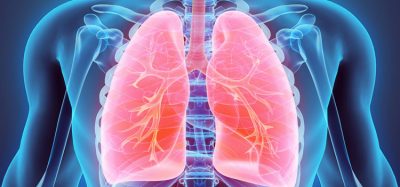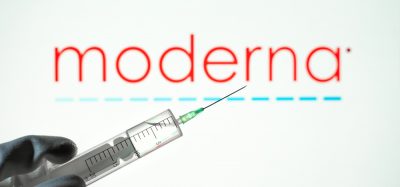Engineering scalable iPSC-NK therapies
Posted: 6 June 2025 | Stefan Braam (Cellistic) | No comments yet
Stefan Braam, Chief Technology Officer, Cellistic, explores the manufacturing and regulatory challenges of scalable, off-the-shelf iPSC-NK cell therapies.
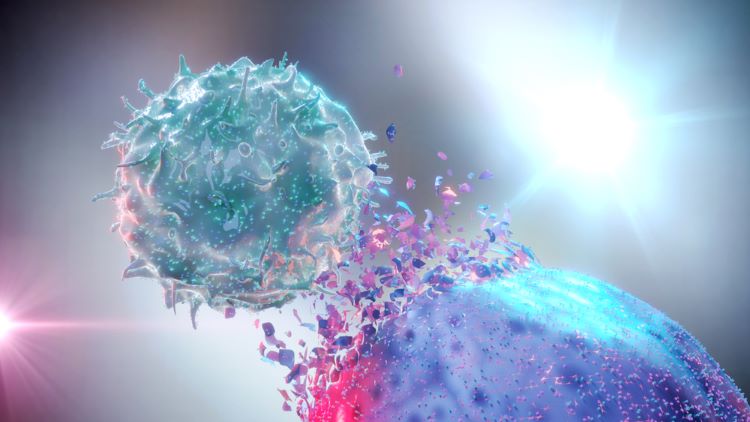

The global cell therapy market is projected to reach $20.07 billion by 2030, driven by the rising demand for off-the-shelf therapies that offer scalable, standardised solutions for treating a wide range of diseases, including cancer and auto-immune diseases.1
One promising approach involves natural killer (NK) cells derived from induced pluripotent stem cells (iPSCs) which provide a renewable, genetically stable cell source capable of precise engineering for enhanced therapeutic functionality.
Unlike donor derived NK cells, iPSC-NK cells can be produced in large quantities with consistent quality. Their compatibility with precise genetic engineering, using a combination of targeted knockins and knockouts, makes them well suited to allogeneic applications and enhancing therapeutic functionality.2
natural killer (NK) cells derived from induced pluripotent stem cells (iPSCs) which provide a renewable, genetically stable cell source capable of precise engineering for enhanced therapeutic functionality”
Several groups are advancing iPSC-derived CAR-NK products, which combine innate cytotoxicity with tumour-specific targeting.3 A notable example is FT596, a CAR-NK therapy that has demonstrated favourable response rates in relapsed B-cell lymphoma with a lower incidence of cytokine release syndrome compared with CAR-T therapies.4
Technical progress is also improving how these cells are made. Scalable bioreactor systems, closed-system workflows and defined media have made it possible to generate clinical-grade iPSC-NK cells at consistent yields.2,5 As more of these therapies increase their scale, regulators are focusing on consistency between batches and sites.
Despite these advances, translating iPSC-NK therapies from the laboratory into clinical and commercial settings presents complex challenges. Developers face pressure to deliver process consistency, control production costs and meet stringent regulatory requirements.
This article explores the technical and operational barriers limiting scalability, along with the strategies and innovations enabling the widespread clinical adoption of off-the-shelf allogeneic iPSC-NK cell therapies.
The manufacturing challenge
Despite these advances, translating iPSC-NK therapies from the laboratory into clinical and commercial settings presents complex challenges”
Scaling iPSC-NK production beyond early-stage research requires tight control over differentiation, expansion and maturation.
Conventional 2D culture systems fall short for large-scale production due to non-compliant materials such as feeders cells, lack of scalability, high labour costs, low yields and batch variability. Whereas feeder free systems, bioreactors and closed systems are increasingly being adopted to support more controlled and standardised manufacturing.
To address the complexity of cell therapy manufacturing, it is critical to define unit operations because they provide a modular, scalable, and efficient way to design, control, and optimise complex manufacturing processes. While these unit operations are increasingly defined, process consistency and robustness across scales remain ongoing concerns. Even minor deviations in cell density, shear exposure or media composition can impact viability and function. Addressing these sensitivities is essential to moving iPSC-NK products beyond small-scale clinical supply to commercially viable processes.
Overcoming scalability and cost barriers
Costs remain a major constraint in iPSC-NK therapies… to address this, developers are moving toward modular, closed systems that integrate single-use bioreactor platforms”
Costs remain a major constraint in iPSC-NK therapies. The complexity of multi-stage production, intensive media usage and manual handling all increase the cost of goods, particularly when scaleup is inefficient. To address this, developers are moving toward modular, closed systems that integrate single-use bioreactor platforms, which simplify validation and reduce turnaround between runs.
In some workflows, final expansion and maturation are carried out in single-use bioreactors. These systems support suspension cultures and offer higher output per run with fewer manual interventions. They also reduce cleaning and validation requirements, making them better suited to modular, closed-system production environments.
Cryopreservation is also used to introduce flexibility at specific points in the process. Freezing at defined points, such as after the iPSC master cell bank (MCB) stage or at lineage specific stem cell stages such as the HSC, allows early-stage production to run independently from final expansion. This separation can help ease scheduling constraints, simplify inventory management and support modular workflows that align more closely with clinical supply needs. Freezing the final product also supports storage and distribution without compromising batch integrity at release.
To stabilise yields and reduce batch failure risk, many platforms now include real-time monitoring tools that track key variables like pH and metabolite concentrations. These insights help flag deviations before they affect cell function and support more consistent manufacturing outcomes as programmes scale.
Quality and regulatory readiness
Ensuring iPSC-NK products meet regulatory expectations depends on robust testing throughout the manufacturing process. Developers must demonstrate that each batch is safe, functional and reliably produced under controlled conditions.
Quality control assays are essential for confirming key product attributes, including:
- cell viability and efficacy – ensuring cells remain viable and retain efficacy following thaw or harvest
- phenotypic identity – confirming that cells express the appropriate NK cell markers, such as CD56, CD16 and NKG2D, which help confirm cytotoxic potential and lineage fidelity
- purity and safety – evidencing that the product is free from residual undifferentiated iPSCs, which could pose a tumourigenic risk if not removed
- potency – demonstrating the ability to effectively target and eliminate tumour cells using target cell lines such as K562 or HL-60, depending on the indication and assay format.
These assays are typically performed using techniques like flow cytometry, digital droplet PCR (ddPCR) and functional cytotoxicity assays. Results feed into release criteria and comparability protocols, particularly when transitioning from process development to good manufacturing practice (GMP) production.
To support reproducibility and reduce operator-related variability, many platforms now incorporate closed-system automation and electronic quality management. These tools support traceability, minimise contamination risk and improve confidence in lot release across distributed manufacturing sites.
Role of gene editing and automation
Gene editing is used early in the development of iPSC-NK therapies to introduce traits that improve tumour targeting, persistence or resistance to inhibition. These edits must remain stable throughout the manufacturing process to ensure the final product retains its intended function. This makes gene editing relevant beyond R&D, as the quality of the final product depends on how reliably those edits are maintained during expansion and differentiation.
Advanced CRISPR-based editing tools, including high-fidelity nucleases and optimised delivery systems, allow for precise and efficient multiplex editing. Once edited, single-cell cloning and characterisation are used to isolate lead candidates for master cell banking. This helps shorten cell line development timelines and supports better control over off-target effects, both of which are important for regulatory confidence and downstream reproducibility.
To support reproducibility, automation is often introduced during clone selection and early screening. Imaging systems can be used to track morphology and growth, while liquid handling platforms standardise transfection and QC steps. This also allows for the effective function of precise, high-throughput workflows that are required for complex gene editing. It reduces the variability inherent in manual cell processing and enables more efficient management of multiplex edits. These approaches all streamline the path from edited clones to GMP-ready production.
Driving the next wave of immunotherapy innovation
meaningful progress [for production of iPSC-NK therapies] will depend on sustained investment in cell engineering, manufacturing process optimisation, analytical development and regulatory alignment”
The potential of iPSC-NK therapies to address challenges in donor variability, manufacturing consistency and clinical scalability is becoming clearer. These cells are well-suited to standardised, allogeneic production models and continue to show encouraging results in early clinical studies. However, meaningful progress will depend on sustained investment in cell engineering, manufacturing process optimisation, analytical development and regulatory alignment.
The shift toward industrialised models is also changing how developers think about platform design and manufacturing strategy. In many cases, collaboration is essential, whether to scale across multiple sites, integrate emerging technologies or respond to evolving regulatory requirements. These shared efforts are already shaping approaches to other allogeneic cell types that rely on consistent, reproducible production.
Long-term viability will depend not just on how well iPSC-NK therapies perform clinically, but on how reliably and cost effective they can be made and supplied. The technical and operational decisions being made today will determine how quickly these therapies transition from small-scale studies to broader clinical and commercial use.
About the author


Stefan won the NGI venture challenge (2009), the Niaba biobusiness Masterclass (2010), is an inventor on multiple patent families, and has secured multiple grants and commercial research collaborations.
References
- Cell Therapy Market Size, Share & Trends Analysis Report By Therapy (Allogeneic, Autologous), By Source (iPSC, MSC), By Application, By Region, And Segment Forecasts, 2023 – 2030. [Internet] Grand View Research. Available from: https://www.grandviewresearch.com/horizon/outlook/cell-therapy-market-size/global
- Goldenson B. Hor P. Kaufman D. iPSC-Derived Natural Killer Cell Therapies – Expansion and Targeting. Front. Immunol. Cancer Immunity and Immunotherapy. 2022; 13 – 202.
- Thangaraj J. Kaufman D. Advances in Human Induced Pluripotent Stem Cell-Derived Chimeric Antigen Receptor-Expressing Natural Killer Cells. J. Vis. Exp. 2025; (216).
- Natural Killer Cell Immunotherapy Shows Promise. [Internet] British Society for Haematology. 2025. Available from: https://b-s-h.org.uk/about-us/news/natural-killer-cell-immunotherapy-shows-promise
- Cerneckis J. Cai H. Shi Y. Induced Pluripotent Stem Cells (Ipscs): Molecular Mechanisms Of Induction and Applications. Sig. Transduct. Target. Ther. 2024; 9, 112.
